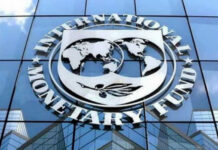

The current inflationary pressures are attributable largely to the rise in international commodity prices and the exchange rate depreciation, albeit to a relatively smaller extent. The latest data from the Bangladesh Bureau of Statistics show there was a spike in domestic consumption demand as well.
The international commodity price may not rise further unless some new shock hits, but it may not return to “normal” levels any time soon. So, the foreign exchange market pressures are likely to continue in the near future. Tackling this is a challenge.
All measures of deficits (trade, current and overall) in the balance of payments are increasing. The overall balance of payment deficit increased by $1 billion to over $3 billion in the July-March period of the current fiscal year relative to the same period the year before.
The current account deficit reached $14 billion and the trade deficit is now $24 billion in March. The biggest driver was increased import payments.
The government is facing the twin challenge of taming inflation and protecting the foreign exchange reserves. At the same time, it must be mindful of not putting the ongoing economic recovery at risk. New risks or threats can’t be ruled out in the state of geopolitics globally.

The recession is in the forecasts for the European market. The question is not whether the recession is coming in Europe. The question is when it will come, how deep it will be, and how long it will linger.
A recession in the US economy is also likely, but less so than in Europe. Even if it occurs, it may not stay for too long. But the tail risks are high.
Any recession in Europe is a serious downside risk for us.
In order to cope with the threats, an appropriate policy response is needed on all fronts: monetary, fiscal, and structural.
Monetary policy must protect reserves by increasing the flexibility of the exchange rate. This is now almost fait accompli.
Better do it from a position of strength than from a position of weakness. This means allowing the interbank to adjust to market conditions.
The role of the Bangladesh Bank is to make it orderly on a market-determined path. Fiscal measures to reduce the demand for imports can help. The finance minister’s call for austerity in domestically financed public imports and travel should be heeded.
Greater exchange rate flexibility will mean further depreciation of the taka, which will increase the cost-push pressure on inflation.
The economy is recovering from the coronavirus pandemic but the increased poverty that happened has probably not been reversed yet despite the recovery in exports, domestic sales, and production. Scores of families who dropped back or were pushed deeper into poverty are not back to their pre-pandemic state yet. Inflation to them is a blow to their recovery.
The government should avoid monetising the fiscal deficit going forward. If the liquidity in the financial system deteriorates, the government should reconsider how much money it will borrow from the market.
The room for expansionary fiscal policy is rather limited. The deficit financing tradeoff can be eased by mobilising budget support from the donors. These require a reform package to sustain growth and enhance resilience to future shocks. There are ongoing discussions with some donors. The government needs to speed up the reforms being contemplated.









